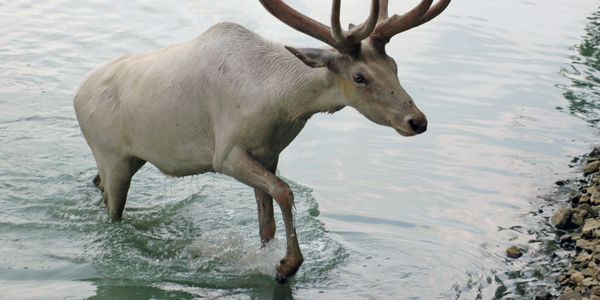Millions Given, Hundreds of Millions of Acres Saved: The Battle for Canada's Forests
/
Hewlett has been funding Pew Charitable Trusts’ work to protect North America’s boreal forest for more than a decade, just renewing its annual $3 million in support. We take a look at what this huge initiative has accomplished and where it’s headed.
Around here, we tend to think of Hewlett first and foremost as a climate and energy funder, since it emerged in 2008 as the national philanthropic leader on the issue. But let’s not forget that this tech money giant has a serious conservation program, with a focus on the West in the U.S. and Canada.
One of its biggest, longest-running conservation initiatives is protection of the North American boreal forest, the largest intact forest and wetland ecosystem on the planet, home to millions of caribou and migrating songbirds, as well as a huge lockdown of carbon. Over the past decade or so, Hewlett has funded efforts to protect these frigid forests with more than $25 million, according to its grants database, primarily to Pew Charitable Trusts.
As a result, Hewlett, Pew, and partners like Ducks Unlimited, have come to play a notable role in saving a huge portion of the 1.5 billion acres, mostly in Canada, from logging, oil and gas, and other development. While unprecedented protections have been enacted, the International Boreal Conservation Campaign shows no signs of slowing down, and Hewlett just renewed it annual commitment to Pew in March for $3 million.
The crowning achievement of the campaign to date came in 2010, when Pew brokered the historic Canadian Boreal Forest Agreement between government agencies, environmental groups, industry members, and First Nations. The deal applies to about 170 million acres of forest, an area about twice the size of Germany. Hewlett funded the effort, along with others backers like the Moore Foundation.
According to Pew, the campaign has secured some kind of protection for more than 350 million acres of the forest in Canada to date—about three times the size of the U.S. National Park system. According to Hewlett’s 2014 refined conservation strategy, the program intends to push forest protection efforts further west to the Pacific Coast and Alaska, where the initiative has made less headway. In 2012, Pew and Ducks Unlimited extended their partnership on the work for another 10 years. The goal is to establish a minimum of 50 percent of the land as parks and preserves.
Foundations support international efforts all the time—global funding is on the rise in American environmental philanthropy—and the boreal forest campaign is most definitely a collaborative effort. But there’s something about this level of work in such a huge part of a neighboring country that really drives home the tremendous influence that global philanthropy can wield, working across borders with governments, nonprofits and industry.
One last point, about Pew: This organization is also on the cutting edge of an ambitious effort to protect vast swaths of sensitive marine areas—another area where funders have flexed new muscle on behalf of the planet.
Related:








